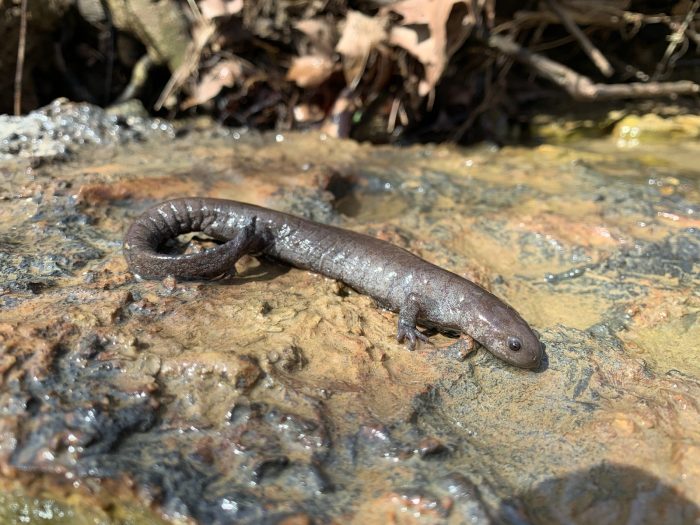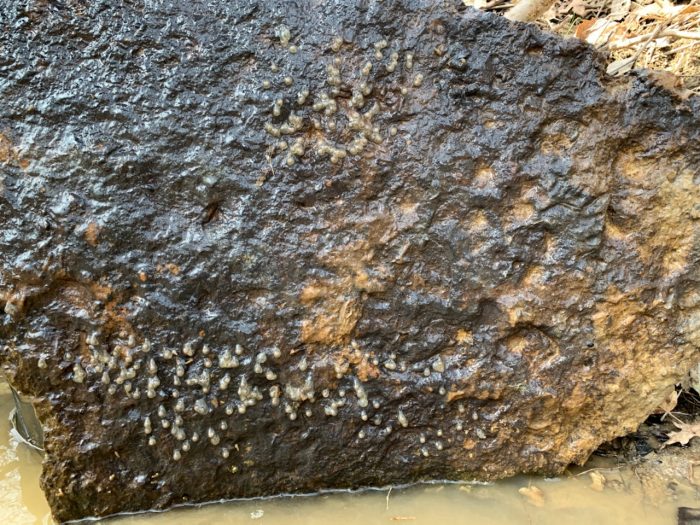
Species Overview
The Streamside Salamander (Ambystoma barbouri), a state listed endangered species in Tennessee, is a stream-breeding, small salamander species of the family Ambystomatidae (mole salamanders). The species occurs in southern Indiana, southern Ohio, central Kentucky, and western West Virginia, with disjunct populations forming the southern portion of the range in the Central Basin of Tennessee. Adult Streamside Salamanders inhabit upland deciduous forests, as well as meadows, pastures, and open field vegetation, in the vicinity of first and second-order ephemeral streams that harbor relatively few predatory fish. Populations are found primarily in association with exposed limestone. Throughout the range, adults breed from December to early April and deposit eggs on the undersurface of submerged flat rocks, submerged vegetation, and wholly or partially submerged cover objects. Deforestation and development around streams used for breeding are the major causes of habitat loss and population declines throughout the range of this species.
Regulatory Status
The state endangered Streamside Salamander, and its habitat, are afforded protection under Tennessee state law. The Streamside Salamander is classified as an at-risk species by the U.S. Fish and Wildlife Service (USFWS); therefore, there currently are no federal protections for the species. A proposed determination date for the federal listing of the species is set for fiscal year 2023 (FY23). The lead state agency regarding this species is the Tennessee Wildlife Resource Agency (TWRA). Questions relating to the federal status of the species can be directed to the USFWS Kentucky Ecological Services Field Office in Frankfort, Kentucky. The species has been categorized as “Near Threatened” by the International Union for Conservation of Nature (IUCN) as they may be considered threatened with extinction in the near future, although it does not currently qualify for the threatened status.
Conservation Efforts

Habitat conservation is vital to the successful recovery of this vulnerable stream-breeding species. The protection of productive riparian areas adjacent to low-order headwater streams and the preservation of buffers around critical habitat to the Streamside Salamander are crucial for the survival of this species. Public land management programs and private landowner awareness are effective tools in helping to maintain current populations. For more information (and a great video) regarding the Streamside Salamander and what you can do to help protect the species, please visit https://www.hvilletn.org/departments/public-works/stormwater/streamside-salamander.
More Information?
If you would like more information relating to the Streamside Salamander, assessment of its habitat, or presence surveys for a project in your county (Sumner, Davidson, Wilson, Williamson, Rutherford, Marshal, and Bedford), please contact Reiss Warren at (800) 940-4025 or by email at .



